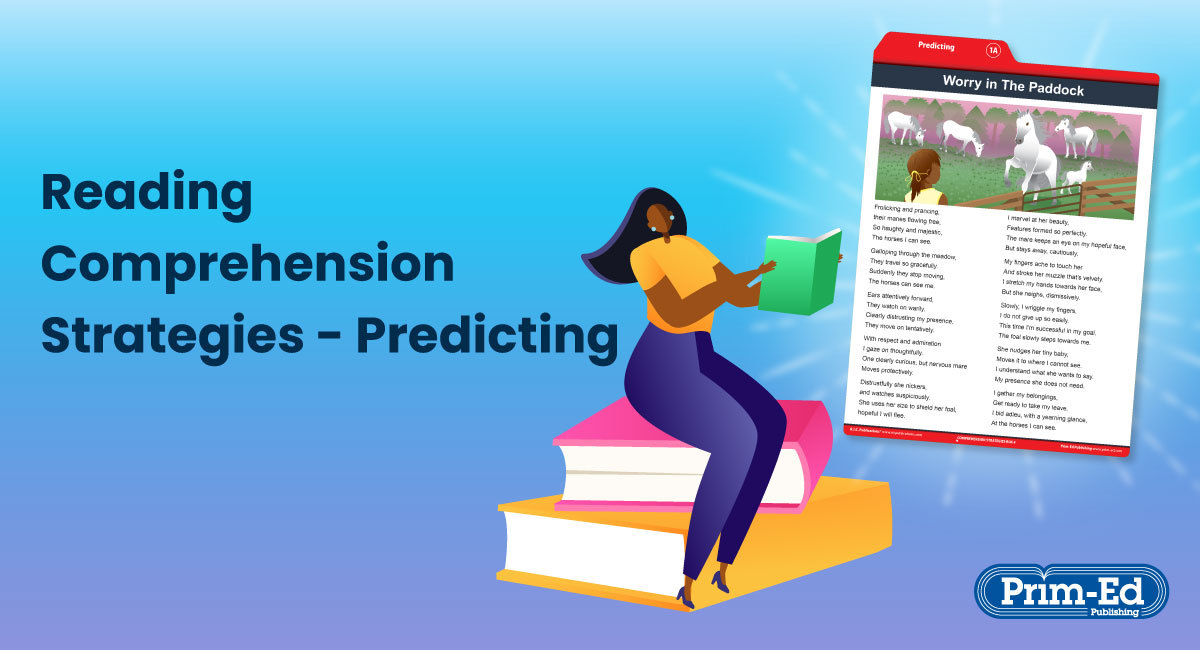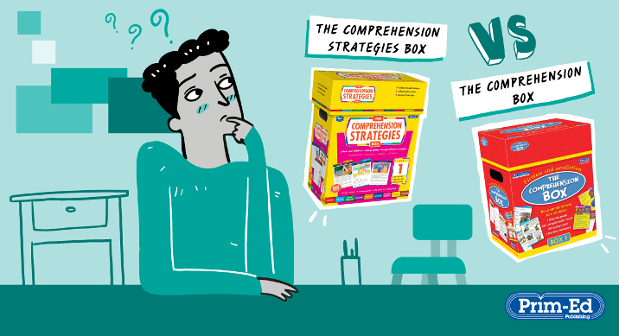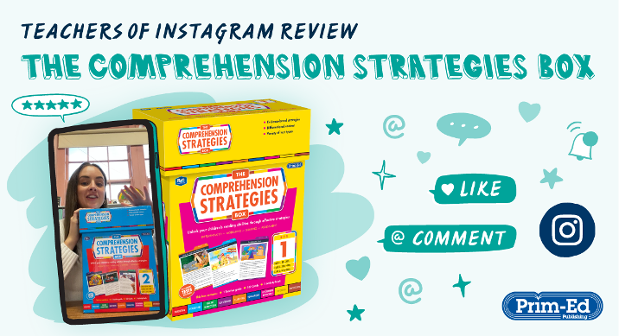- Wednesday 30 September 2020
The Predicting Reading Comprehension Strategy
Understanding what they read is one of the biggest difficulties a child will have while reading. It is therefore crucial that they are explicitly taught a range of strategies to encourage and master reading comprehension.
Predicting is one of many important reading strategies for children to learn. Children should be taught how to predict using clues or evidence from the text such as illustrations, subtitles and the plot, but also to use their prior knowledge and experiences to combine what they already know with what they discover in the text; i.e. to link their prior knowledge with new information from the text. Research has shown that children’s existing knowledge is crucial in determining their ability to comprehend what they read. Good readers always connect their previous knowledge to the new knowledge they encounter in a text.
Predictions should not be wild guesses, but considered, well thought out and logical ideas based on the information provided in the text and any prior knowledge of the subject. It is also important for children to understand that even though they may have well thought out predictions, their predictions may not always be correct.
Predicting in the Classroom
Predicting is not just a reading comprehension strategy. The ability to make good predictions is also an important life skill with many applications, in and out of the classroom. Teachers can utilise everyday classroom and personal experiences as predicting activities; for example, What will the weather be like tomorrow? What lesson will be after lunch? What will happen to the two substances when they are mixed together for the science experiment? What image or number will come next in a maths pattern? How do you think you would feel if you lost your PE kit?
Teachers can develop children’s prediction skills and therefore comprehension using a variety of visual and written texts. They can look at pictures and use their prior knowledge and experiences, as well as clues in the picture, to predict what will happen next, what the characters will do, and so on. Similarly, they can look at a fiction book cover and predict what they think might happen in the story, based on the title and illustration.
For reading comprehension, predicting activities may require children to predict what the next words, sentence, paragraph or chapter might say, and can occur before, during or after reading a text. Teachers can read part of a sentence and ask children to predict the next word or sentence ending, or what might happen further on in the text.
Non-fiction texts should also be used to develop prediction strategies, as children can be encouraged to use what they know about different text structures to predict the next part. They should be encouraged to use both prior knowledge of different text types and text clues to predict vocabulary, text layout and features of the text. Children usually find making predictions about fiction texts easier than for non-fiction texts, so non-fiction texts should be introduced when children are comfortable with the predicting strategy.
Children should be asked to justify any predictions they make, drawing upon both text clues or evidence and their own background knowledge gained through personal experience. Asking children to justify their predictions will encourage them to think more deeply.
Templates could be used to help children record their predictions in an organised way. These could also enable the children to realise that predictions may change and not always be correct, but that doesn’t mean that their predictions weren’t well thought out, logical or informed. Whilst reading, good readers are constantly revising any predictions that are not confirmed, or proved to be incorrect, as the text progresses. In contrast, struggling readers often make illogical predictions, as they choose something vaguely related to the topic rather than examining the evidence in the text. Teachers should encourage children to back up their predictions with text evidence; for example, ‘I think my prediction is logical because in the text …’.
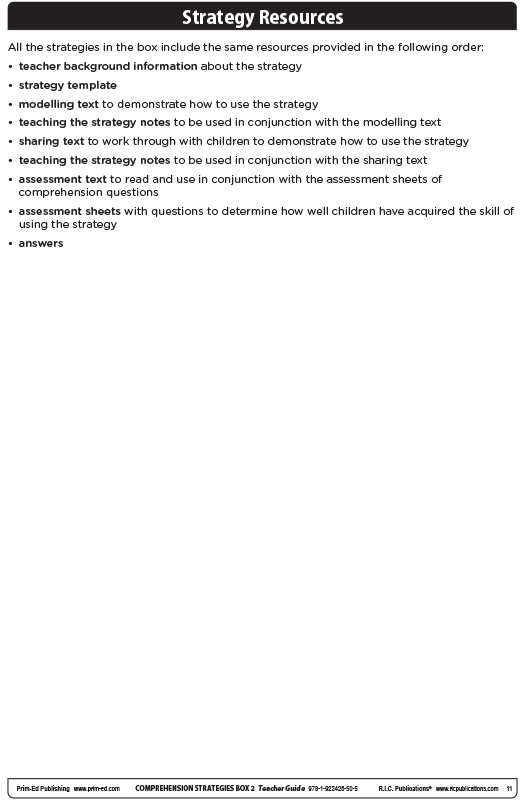
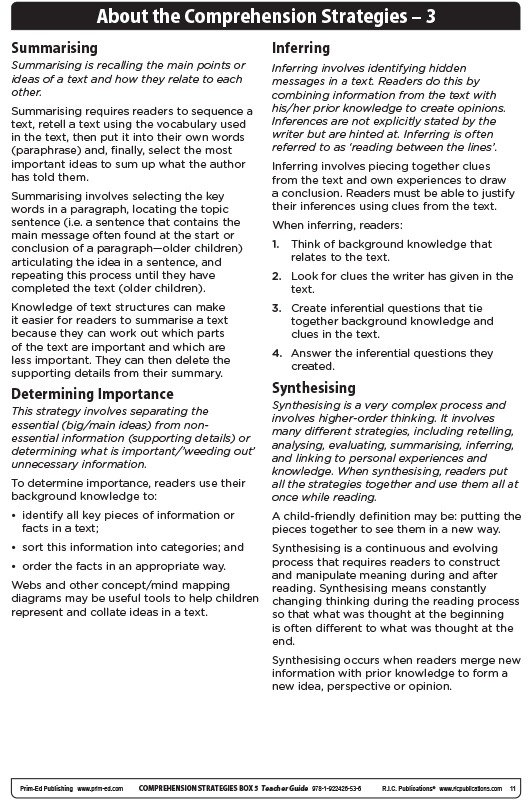
Templates from Teacher Guides in The Comprehension Strategies Box series.
Predicting in The Comprehension Strategies Box
Predicting is the first of nine reading comprehension strategies covered in the The Comprehension Strategies Box series. This boxed series, written at six levels for the six main primary school years, consists of full-colour, differentiated, fiction and non-fiction reading cards which cover nine different comprehension strategies, a comprehensive teacher guide that explains the strategies and how to use the series, and an activity book with photocopiable activities to enable children to focus on and practise each strategy.
Each reading strategy is introduced in the teacher guide, with a page of background information for teachers to familiarise themselves with.
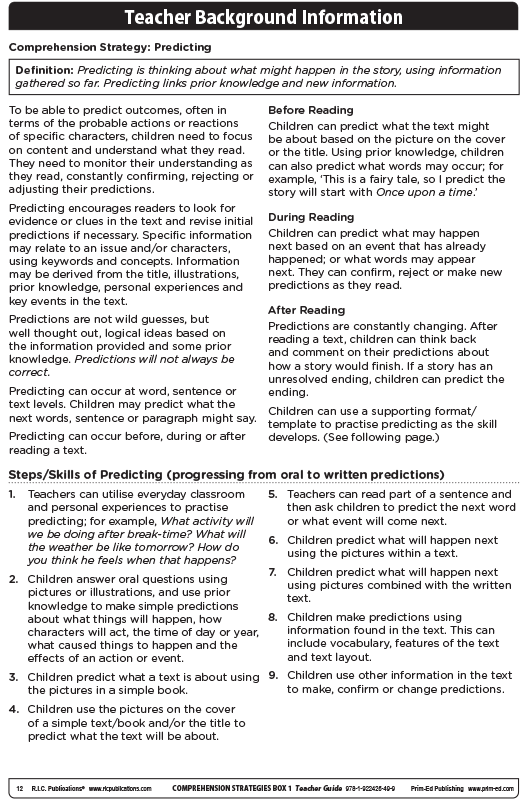
Sample page from Teacher Guide 1 in The Comprehension Strategies Box series.
The teacher should then use the modelling text provided to introduce and demonstrate the predicting comprehension strategy to their class. The illustrated text should be displayed onto an interactive whiteboard, to enable the teacher to conceal and reveal parts of the text to the children, and highlight text and add annotations as appropriate. The steps the teacher should go through to model and teach the strategy are clearly laid out in the teacher notes. The modelling is oral and includes what the teacher should say before reading the text (looking at the picture and title, using prior knowledge, looking at the genre and thinking about likely vocabulary); during the reading of the text (questions and discussion pointers are provided for various points within the text, which will require children to look for evidence within the text and use own prior knowledge); and after reading the text (predicting what might happen next in the text, reviewing predictions already made to check their accuracy, and discussing whether any predictions changed as more of the text was read).
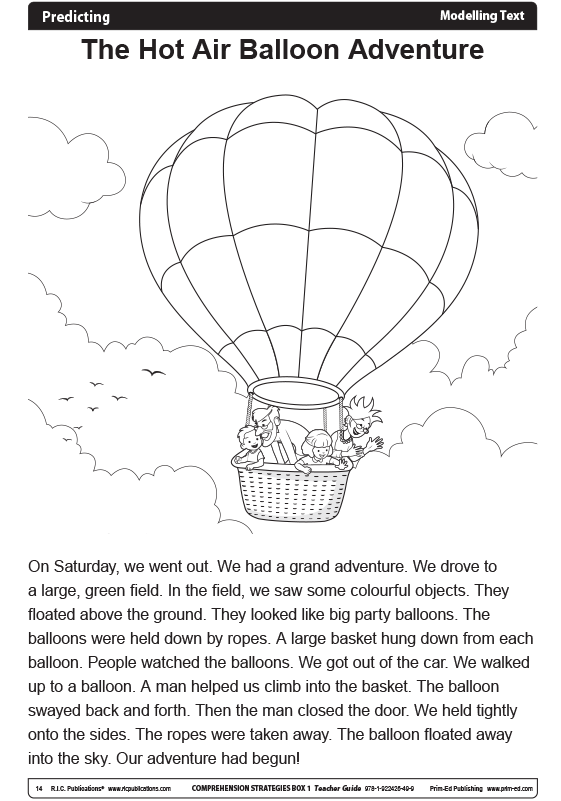
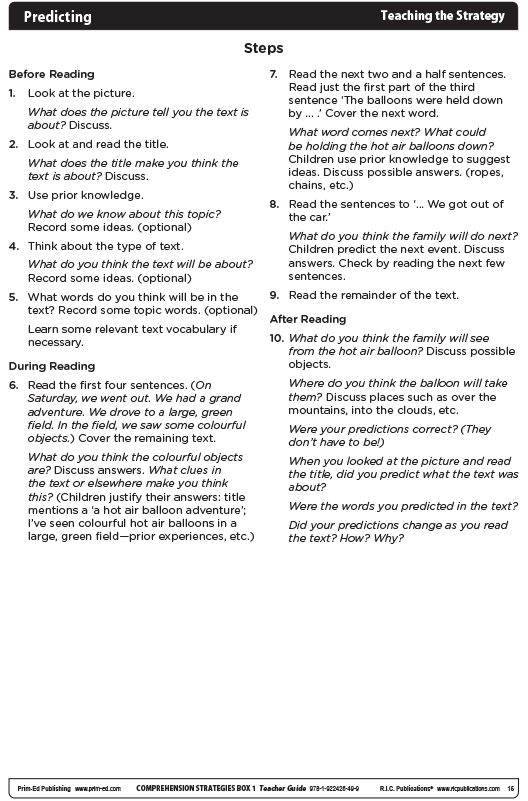
Sample pages from Teacher Guide 1 in The Comprehension Strategies Box series.
In a similar way to how the modelling text was presented and used with the class, the teacher should then present the sharing text. This can either be another oral activity or children may work with each other to answer the questions and practise the strategy together.
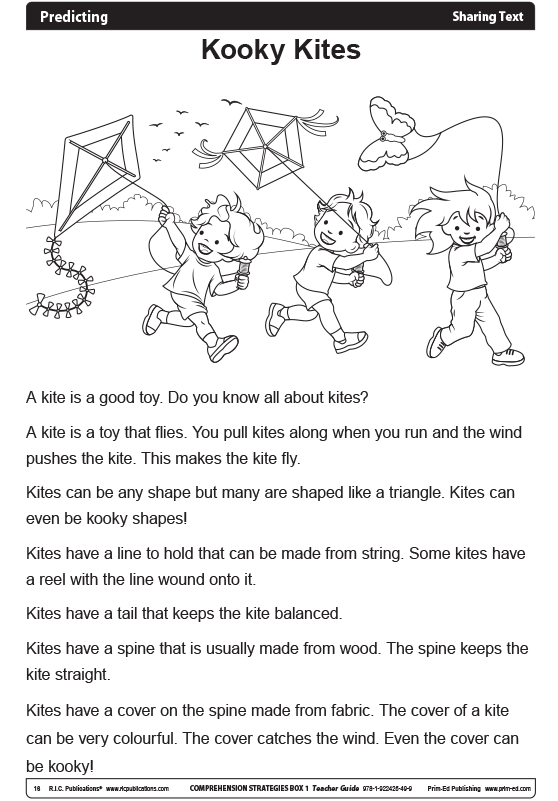
.png)
Sample pages from Teacher Guide 1 in The Comprehension Strategies Box series.
The children can then work on some of the activity cards, either individually, in pairs or in small groups. The teacher should select a particular level of card (1, 2 or 3), depending on the reading level of the child or group. A placement test is provided to help with this. There are two texts on each card, so children can practise the predicting strategy using more than one text. The children should use the corresponding resource sheets in the activity book which pose questions and activities that children will need to use prediction skills to answer.
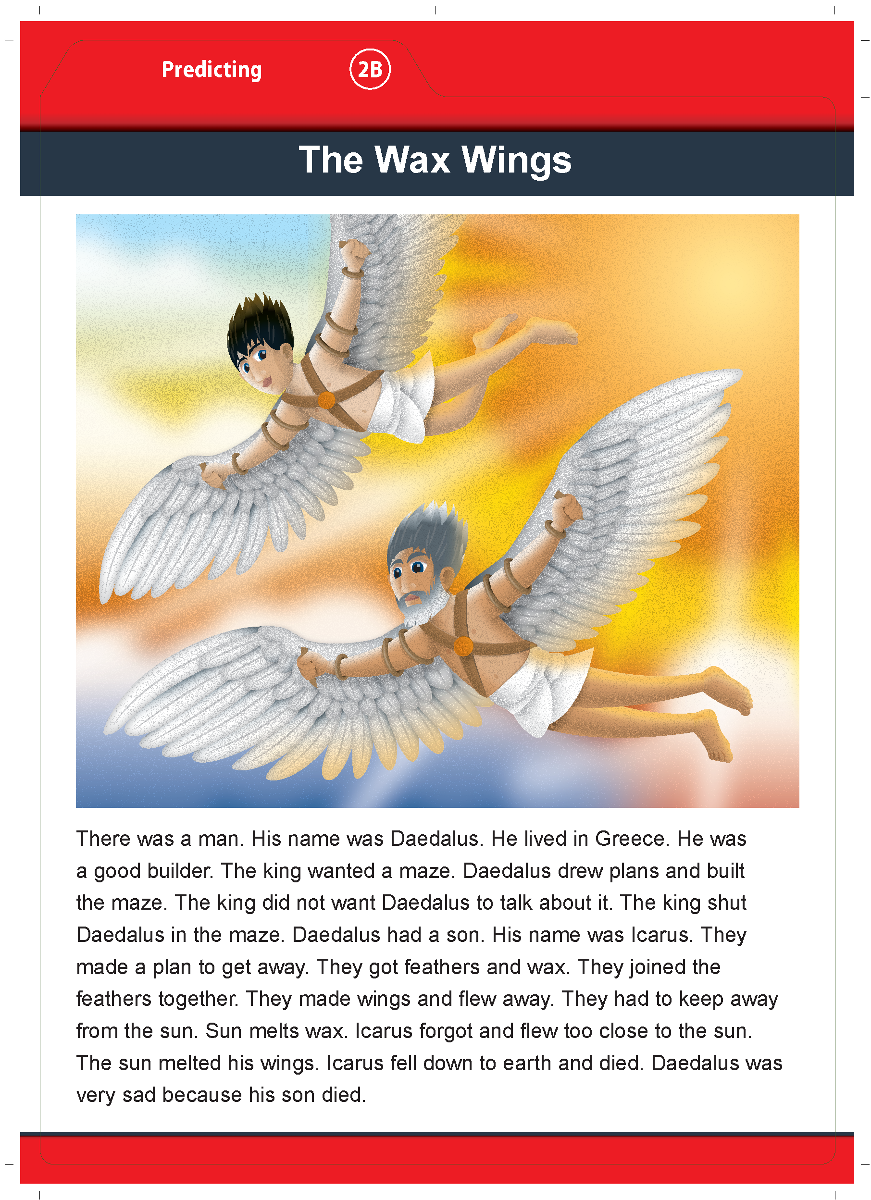
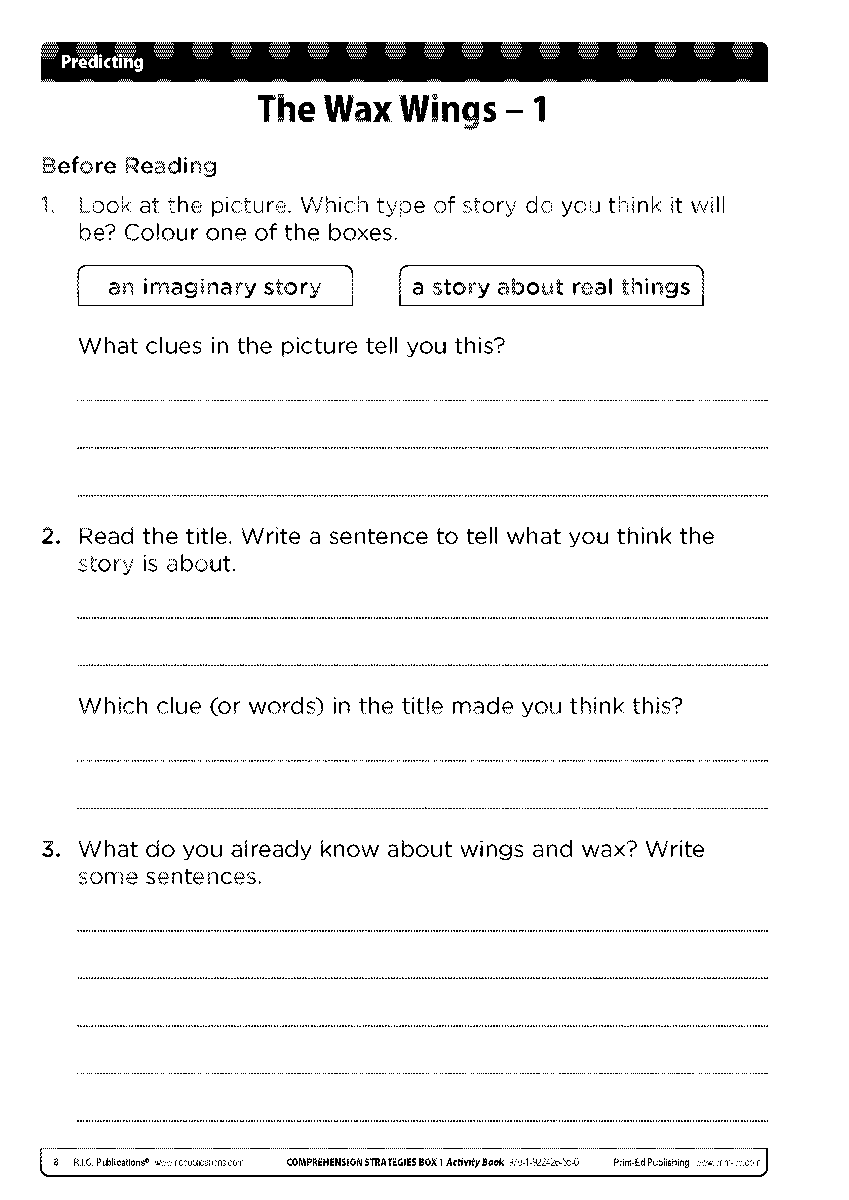
Card and sample pages from Activity Book in The Comprehension Strategies Box 1.
The teacher can use the assessment text in the teacher guide and the corresponding assessment questions to assess how well each child has understood and can use the predicting comprehension strategy.
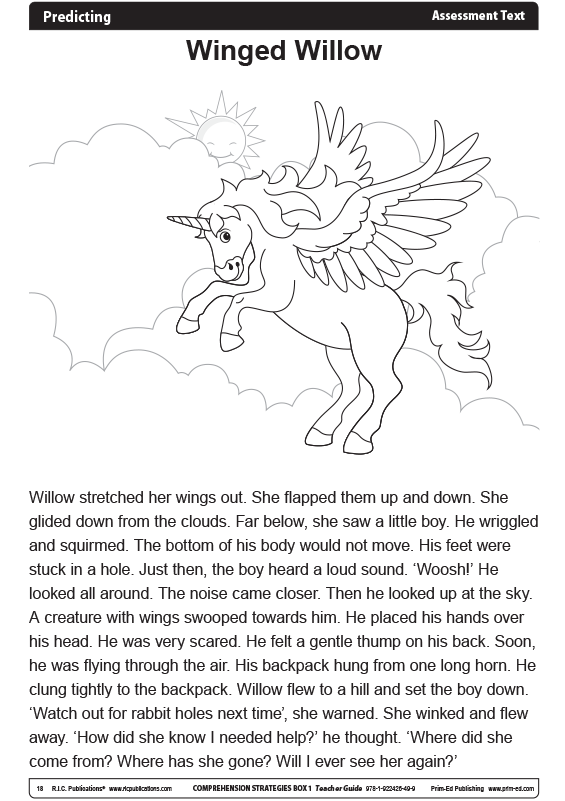
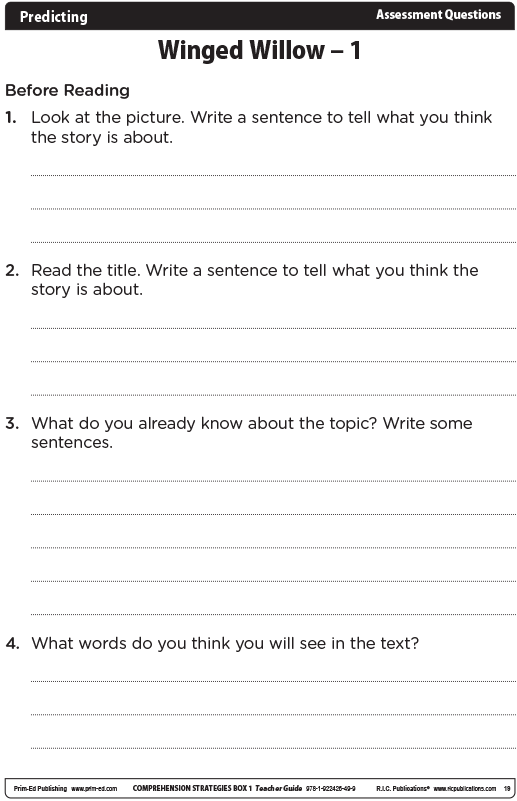
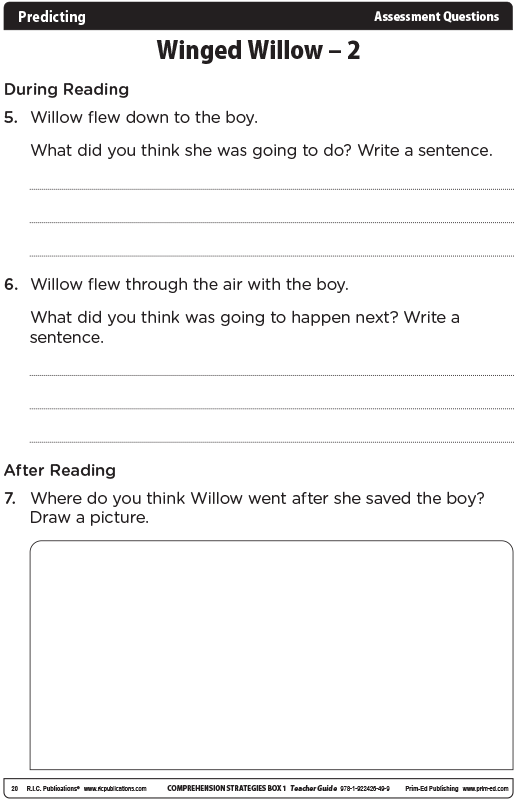
Sample pages from Teacher Guide 1 in The Comprehension Strategies Box series.
Other Resources to Teach the Predicting Strategy
Besides The Comprehension Strategies Box, Prim-Ed Publishing also publishes a seven-book copymaster series, titled Teaching Comprehension Strategies, which uses modelling, discussion and guided and independent practice to teach children the strategies they can use to develop different reading skills.
